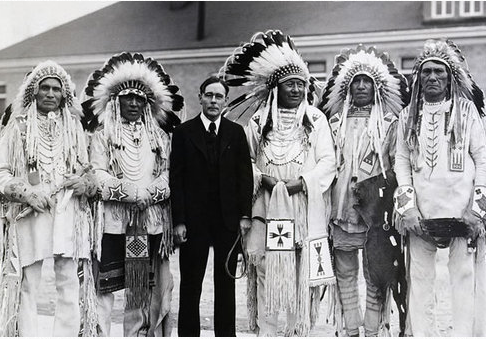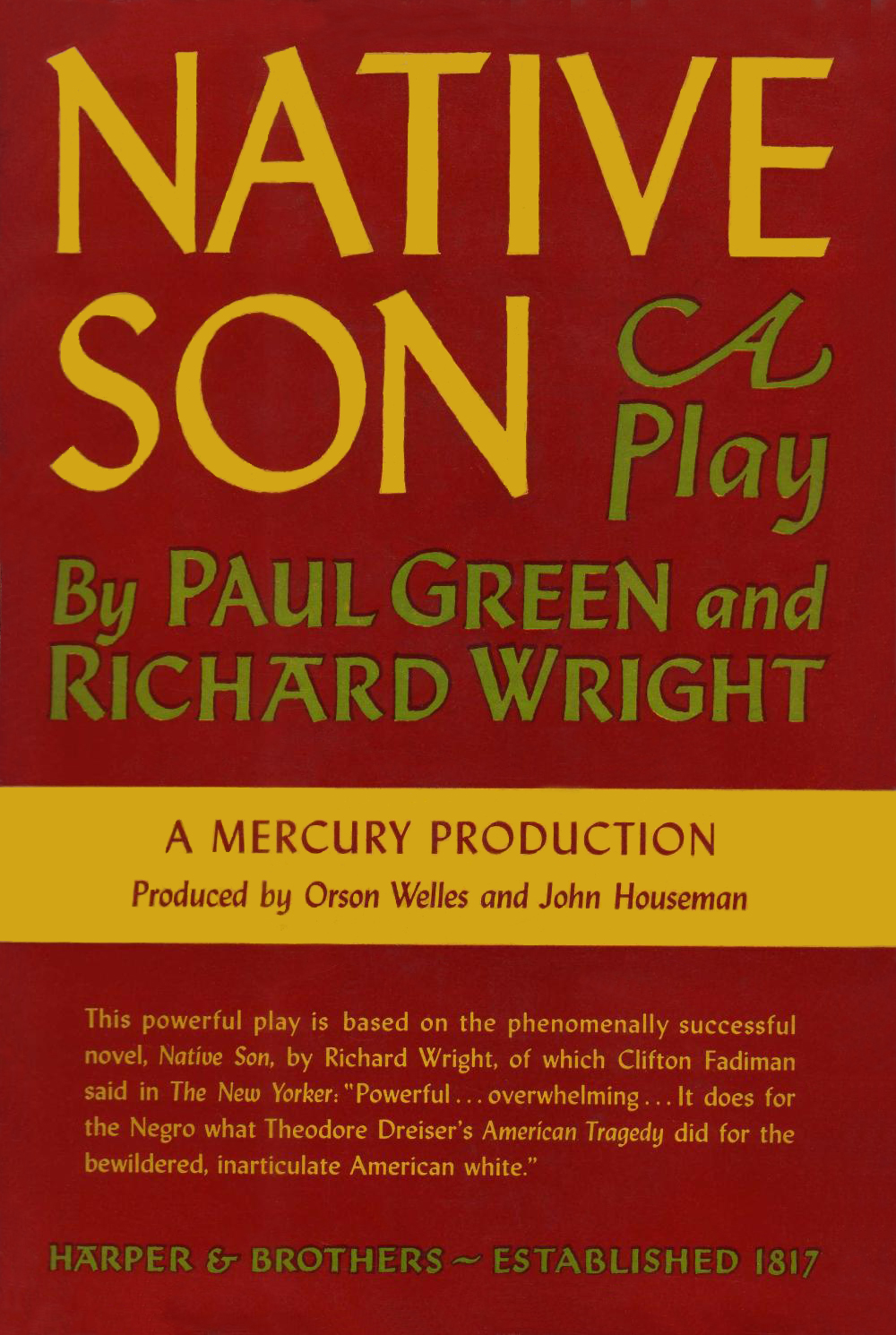The Great Depression had a lasting effect on the cultural and social aspects of American life. For one, many population shifts occurred: Those living on the Great Plains migrated west, and African Americans moved north in large numbers.

In addition, crime rate increased, and more people attended high school (teens who might have sought jobs couldn't find them). Movies, a very inexpensive form of entertainment, became very popular during this time, and so did baseball. Also, nearly everyone listened to the radio.

A man traveling by foot, looking for work in mines, lumber camps, or farms, during the Great Depression (photo by Dorothea Lange, 1938)
Not every worker lost a job during the Depression. Not every family needed aid. Most Americans, however, had to make do with less: less income, less food, and less security. Some families survived the Depression by pulling together. Parents and children shared homes with grandparents or other relatives to save money. Although the birthrate had decreased, school enrollment increased; because fewer young people could find work, they remained in school.
The strain shattered other families, however. Nearly two million men, and a much smaller number of women, abandoned their homes. They took to the road, drifting to warm places such as Florida and California.

Eleanor Roosevelt at a Works Progress Administration nursery school in Des Moines, Iowa, in 1936
Many people thought that women should not hold jobs if men were unemployed. Despite such prejudices, desperation drove many women into the workforce. Many families survived on a woman’s income, even though American women earned less than men. Women also worked harder at home to make ends meet. Instead of buying clothes or groceries, they sewed their own clothing, baked their own bread, and canned their own vegetables. Some women started home businesses such as laundries or boardinghouses.
The New Deal era opened doors for women in public life. President Roosevelt appointed the first woman ever to serve in the cabinet, Frances Perkins. He also named more than 100 other women to federal posts. One, Ellen Sullivan Woodward, started a program to give jobs to women. In 1932, Hattie Caraway of Arkansas became the first woman to be elected to the United States Senate. The best-known woman in American public life was Eleanor Roosevelt, who often acted as her husband’s “eyes and ears.” She made many fact-finding trips for the president because polio had limited his mobility. Mrs. Roosevelt campaigned vigorously for women and minorities and other humanitarian concerns. She wrote a daily newspaper column and used her boundless energy to meet people all over the country.

A dust storm blows through Rolla, Kansas, on May 6, 1935.
To make matters worse, the southern Great Plains suffered an environmental disaster during the 1930s. Hardest hit were western Kansas and Oklahoma, northern Texas, and eastern Colorado and New Mexico. The region was dubbed the Dust Bowl. Using new technology such as tractors and disc plows, farmers had cleared millions of acres of sod for wheat farming. They did not realize that the roots of the grass had held the soil in place. When a severe drought struck in 1931, crops died, and the soil dried out. Strong prairie winds simply blew the soil away. Each storm stripped away more soil. One storm in 1934 carried about 300 million tons of soil, depositing some of it on ships 300 miles out in the Atlantic Ocean. The drought, and the storm, continued for years. People called the storms “black blizzards.”
Thousands of Dust Bowl farmers went bankrupt and had to give up their farms. About 400,000 farmers migrated to California and became migrant workers, moving from place to place to harvest fruits and vegetables. So many came from Oklahoma that people called them “Okies.”

This statue in Washington, D.C., honors Mary Jane McLeod Bethune, an American educator and civil rights activist known for starting a private school for African American students in Florida.
The Depression fell especially hard on the minority groups who were already on the lower rungs of the American economic ladder. These groups included African Americans, Native Americans, and Hispanic Americans. In the South, more than half of the African American population had no jobs. African Americans who lived and worked in Southern cities found their jobs taken by white people who had lost theirs. The collapse of farm prices crushed African American farmers. Seeking more opportunity, about 400,000 African American men, women, and children migrated to Northern cities during the decade of the 1930s. These migrants did not fare much better there, however. The jobless rate for African Americans remained high.
African Americans did make some political gains during the Depression. Roosevelt appointed several African Americans to federal posts. He had a group of advisers, known as the Black Cabinet, that included Robert Weaver, a college professor, and Ralph Bunche, who worked for the State Department. Mary McLeod Bethune, who established Bethune-Cookman College in Florida, also served as an adviser. African Americans continued to fight against prejudice. In 1939, opera singer Marian Anderson was denied permission to sing in Constitution Hall because she was black. Mrs. Roosevelt helped arrange for Anderson to give a historic concert at the Lincoln Memorial.

John Collier, commissioner of Indian affairs, meets with South Dakota Blackfoot Native American chiefs in 1934 to discuss the Wheeler-Howard Act, later known as the Indian Reorganization Act.
The 1930s did bring some benefits to Native Americans. The new head of the Bureau of Indian Affairs, John Collier, introduced a set of reforms known as the Indian New Deal. Collier halted the sale of reservation land, got jobs for 77,000 Native Americans in the Civilian Conservation Corps, and obtained Public Works Administration funds to build new reservation schools. Most important, he pushed Congress to pass the Indian Reorganization Act of 1934. This law restored traditional tribal government and provided money for land purchases to enlarge some reservations.

A Mexican-American migrant woman harvests tomatoes in the Santa Clara Valley, California (November 1938 photograph by Dorothea Lange).
At the beginning of the 1930s, about two million people of Hispanic descent lived in the United States, mostly in California and the Southwest. Many had emigrated from Mexico. They worked as farmers, migrant workers, and laborers. As the Great Depression deepened, resentment against Mexican Americans grew. Many lost their jobs. Politicians and labor unions demanded that Mexican Americans be forced to leave the United States. The government encouraged Mexican immigrants to return to Mexico. Authorities gave them one-way train tickets to Mexico or simply rounded them up and shipped them south across the border. More than 500,000 Mexican Americans left the United States during the early years of the Depression, often involuntarily.

Police used tear gas bombs, night sticks, and police reserves to subdue the communist demonstration at the White House on March 6, 1930.
Hard times helped radical political groups gain ground in the United States during the 1930s. Radical groups advocate extreme and immediate change. Socialists and Communists viewed the Depression not as a temporary economic problem but as the death of a failed system. They proposed sweeping changes. Communism attracted workers, minority rights activists, and intellectuals with promises to end economic and racial injustice. Although both socialism and communism had significant influence, neither became a major political force in the United States.
Another political development that caught the attention of many Americans was the rise of fascists in Germany and Italy. Fascism is a political philosophy that holds the individual second to the nation and advocates government by dictatorship. In 1936, the Spanish Civil War began. Germany and Italy supported fascists who were trying to take over the Spanish government. Although the United States remained neutral, more than 3,000 Americans went to Spain to fight the fascists.

A theatrical poster for the 1940 film The Grapes of Wrath, an adaptation of John Steinbeck's 1939 novel
The Depression produced two separate trends in entertainment and the arts. One was escapism, light or romantic entertainment that helped people forget about their problems. The other was social criticism, portraits of the injustice and suffering of Depression America. Radio became enormously popular during the 1930s. Daytime dramas sponsored by laundry detergents earned the nickname “soap operas.” Adventure programs such as Dick Tracy, The Lone Ranger, and Superman had millions of listeners, as did variety shows featuring comedians George Burns, Gracie Allen, and Jack Benny.
Every week, about 85 million people went to movie theaters, usually to escape their cares and worries. Some movies did explore serious topics. For example, The Grapes of Wrath (1940) was a screen version of John Steinbeck’s powerful novel about farm families fleeing the Dust Bowl. The 1939 film of Margaret Mitchell’s novel, Gone With the Wind, set in the Civil War era, also portrayed people coping with hard times.

The front cover of the dust jacket for the book Native Son (The Biography of a Young American), a play in 10 scenes by Paul Green and Richard Wright, a Mercury production by Orson Welles, presented by Orson Welles and John Houseman
Many writers and painters portrayed the grim realities of Depression life. Richard Wright’s novel Native Son told the story of an African American man growing up in Chicago. Writer James Agee and photographer Walker Evans depicted poor Southern farm families in Let Us Now Praise Famous Men. Photographer Margaret Bourke-White also recorded the plight of American farmers, and Dorothea Lange took gripping photographs of migrant workers. Painters such as Grant Wood and Thomas Hart Benton showed ordinary people confronting the hardships of Depression life.
| What was on the rise as unemployed workers resorted to petty theft to put food on the table? | the crime rate |
| Where did attendance increase as it was becoming harder and harder to find jobs? | high schools |
| What area lost large numbers of people because of the Dust Bowl? | the Great Plains |
| How did Roosevelt use the radio to keep the public informed? | fireside chats |
